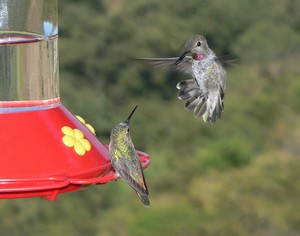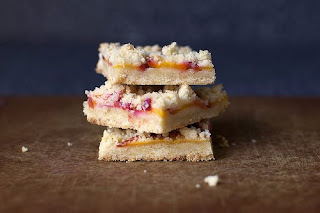 |
| photo from HerbCompanion.com |
Those of you who know me know that I actively seek scientific explanations for what I observe in the world. I have been trained in natural history with a heavy dose of evolutionary theory. I will almost always ask, "How is _______ an adaptive trait?", whether I'm looking at pollination in the garden, or the hunting behaviors of my cats.
I recently read a brilliant essay called "The Orchid Children", by David Dobbs, originally published in
The Atlantic, now in a collection called
The Best American Science Writing 2010. Dobbs explores the "orchid hypothesis" which suggests that genes which predispose some people to behavioral dysfunction
may also enhance function in favorable contexts.
He explains that there are "dandelion children" (the social norm) who, thanks to resilient genes, do pretty well "whether raised in the equivalent of a sidewalk crack or a well-tended garden". And then there are "orchid children" with a certain gene variant (about 1 in 5 people), "who will wilt if ignored or maltreated but bloom spectacularly with greenhouse care". This risk allele has survived in the human population precisely because the risky behaviors have positive effects in certain contexts. In fact, Dobbs refers to humans (and rhesus monkeys who share the risky serotonin-transporter allele with us) as "weedy species . . . able to adapt to new, changing or disturbed environments". The fact that there is wide variability in our behavioral genes, may have allowed humans to thrive on this planet.
 |
| photo from PolkaDotPotato.com |
For three weeks this fall I took a job working with a kindergartener with behavioral issues. I'll call him "Nate". Nate is a husky five-year-old who has already experienced his share of life's hard knocks and who is very smart. In the time I worked with him, he exhibited many "externalizing" behaviors including kicking, hitting, pushing, and tripping other students (and me), and throwing temper tantrums when something wasn't going Nate's way. At first, we removed him from the classroom and allowed him to spend most of his day in the resource room where he had a quiet environment and one-on-one attention. Gradually, Nate chose to spend more of his time with his peers in the kindergarten class, but still needed a lot of intervention. One day his teacher selected him to be "King of the Day", a rotating honor that is "randomly" bestowed upon each child. Nate bloomed that day. You have never seen a happier, prouder, more responsible little boy. Adults who observed him wearing his paper crown AND smiling AND observing the rules all remarked on his changed affect. After that day, Nate's behavior steadily improved to the point where he is now fully integrated into kindergarten WITHOUT an aid. Nate is an orchid. If he is given an optimal environment, he blooms and
may even do better than his peers.
Most of us are dandelions. We were pliable, obedient children, who didn't attract undue attention in school, could get along with our peers, and have bounced back pretty well when life got hard. But we also know those orchids who were sensitive or sad, who were always in trouble at school, and developed dangerous habits later in life. Somehow our society must continue to support those orchids and encourage them to thrive, because who knows? Their specific strengths and abilities, if nurtured, might just be the key to our species' survival.
 |
photo from Gator-Woman.com
|







